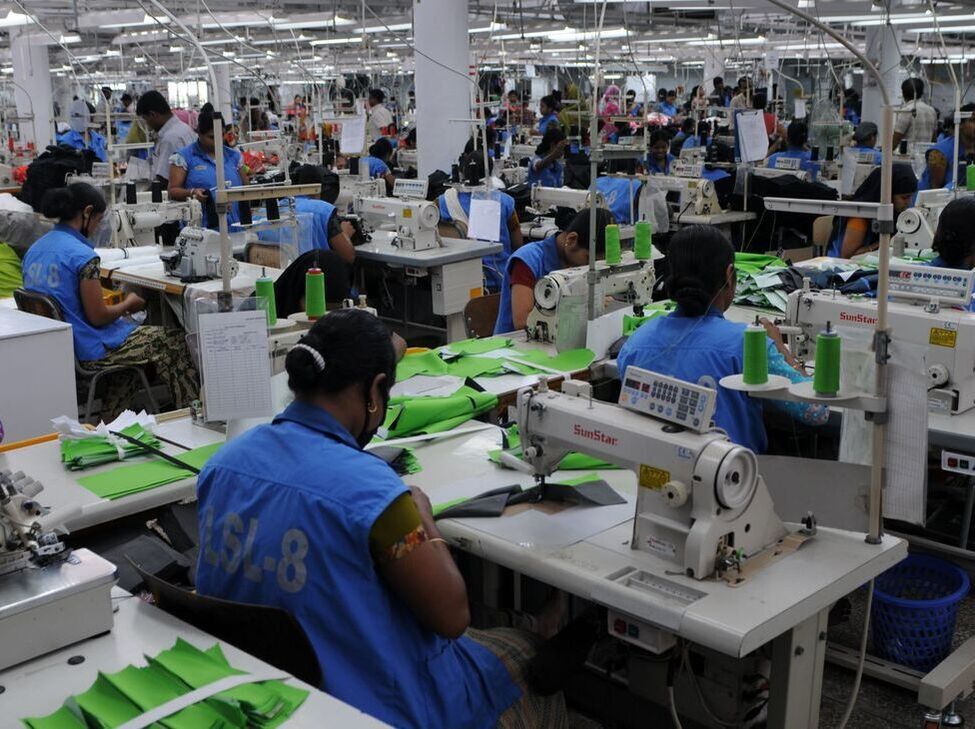The ‘Othering’ of returnee migrants in Bangladesh as they are seen as COVID-19 ‘importers’22/6/2020
Ala Uddin, University of Chittagong, Bangladesh
While many countries were taking necessary measures to fight the coronavirus, Bangladeshi leaders were largely in denial of the magnitude of the pandemic and were busy making speeches in line with this tune until around mid-March 2020. As we watched the virus spread across China, Europe and America, we were continuously reassured that, like other flus (e.g. Swine flu, SARS, Ebola or Zika), coronavirus would not hit Bangladesh. Despite these delusions, the first COVID-19 patient was eventually confirmed on 8 March 2020, with the first death following only ten days later. Time and again, we were assured that 'we are prepared enough to fight against the virus', and that it is 'like flu, not serious diseases'. However, even as COVID-19 was being brushed off, weariness and mistrust was already building against migrant workers, foreign travelers and other outsiders as they were quickly blamed for bringing COVID-19 into Bangladesh — an attribution that has resulted in both internal and returning migrants experiencing ‘Otherness’ in their own society.
Bangladesh remained relatively unaffected by the coronavirus until the beginning of March 2020 as migrants began returning from countries that had already been hit including China, Italy, KSA and Qatar. Although returning migrants were coming home, their reception was less than welcoming as they were blamed for bringing the contagious virus with them and considered as a potential threat for the country. From the airport to their homes in villages and hometowns, they have been ill-treated as ‘unwelcomed’ returnees. In preparation for returning migrants, the international airport in the capital was haphazardly equipped to conduct health checks upon arrival with almost dysfunctional equipment, and insufficient and inefficient staff to check the temperature of returnee migrants from China, Italy and other foreign passengers. Those returning from Europe were asked to take quarantine in a government-arranged hajj camp which did not maintain a minimum hygiene standard (e.g. bedroom, space, toilet, washroom, water, etc.). Given the deplorable conditions, many refused to stay and were therefore asked to self-quarantine in their homes, and although they were allowed to do so, local authorities began stamping returnees’ hands on arrival from foreign countries in an attempt to prevent them from breaking home quarantine. In addition to this experimental identification system, local security forces also hoisted red flags on top of migrants’ houses in their hometowns and villages to maintain visible surveillance and keep the non-migrant citizens at a safe distance from the migrants, or ‘virus bearers’ as they were classified.
This attitude of seeing and treating returning migrants as ‘the Other’ stemmed from attitudes at the top with public health officials and the Institute of Epidemiology, Disease Control and Research (IEDCR) reinforcing the idea that overseas workers were responsible for the coronavirus. As a result, Bangladeshis began to believe that COVID-19 is inextricably linked to bidesh (foreign country), bideshi (foreigners), and probashi (Bangladeshi migrant workers). This sentiment was only exacerbated when the health minister urged expats not to return to Bangladesh during the pandemic in early March 2020. This resulted in the public becoming anxious about the arrival and movement of foreigners and returnee migrants. In addition to official security surveillance, community scrutiny spread in a precautious manner with local youths posting warning messages on social media informing the local police about migrants’ arrival and movement. The idea that COVID-19 is an imported, foreign or migrant disease has spread faster than the virus itself; now, the absence of returnee migrants or foreigners in a locality is seen as an indicator of safety in terms of proximity to the virus. Recent telephone conversations with locals revealed that they consider themselves ‘presumably safe’ if there are no overseas returnees or foreigners nearby. Internal migrants, including those who work in different cities within the country and those who stayed home in their villages during the government-imposed lockdown, are also facing a newfound hostility. To the villagers, cities like Dhaka, Chittagong, Narayanganj and Gazipur are considered closer to overseas populations, and since these cities have been hotspots for the coronavirus outbreak (85% of COVID-19 cases have been concentrated in these cities), locals have not maintained the preexisting relationship with migrants in these cities as friends or relatives, and instead suspect them of being ‘bearers’ of the deadly virus. These fears are not totally unwarranted, considering the first person who died on 18 March 2020 in Dhaka contracted the virus when he came in contact with someone who had recently returned from Italy, and an additional two infected people were returnee migrants from Italy. In truth, many people believe COVID-19 to be an issue of developed countries whereby locals believe there has never been a pandemic of such magnitude in Bangladesh. This idea hinges on the belief that the soil and climate of the country are not conducive to the spread of the virus. People believe that because they work outside in the sun they will not be infected by the virus – as stated by some, 'Here we live through rain, dust and sand, the virus will not be able to attack much here'. Furthermore, many believe COVID-19 to be a bigger issue in 'developed, cold-countries countries (e.g. England, America, China, Italy, etc.), where people stay in air-conditioned rooms/offices all day and do not spend time in the sun. In temperate countries like Bangladesh, India and Pakistan, there are so many harder viruses than the coronavirus. But, if someone brings it from outside, it is a matter of fear'. This school of thought has led many Bangladeshi people to associate garment workers with the outbreak, since they work in air-conditioned rooms in different factories and work for foreign companies/brands with frequent foreign visitors. For that reason, many believe that garment workers are at a higher risk of being infected with the coronavirus than others who work in the open field under the sun. Considering how the COVID-19 outbreak in Bangladesh originated, it is difficult not to characterise it as an uninvited foreign problem. However, blaming returnees and other foreigners for the spread of the coronavirus in Bangladesh conflates migration issues with poor infectious disease management. In a pre-COVID-19 Bangladesh, overseas workers were sought-after citizens, but now these same people are considered villains in their own home. Failure to provide accurate and evidence-based information about COVID-19 and the required preparation to face the pandemic have served to inflame a situation where migrants are being stigmatised and challenged based on a generalised perception that, had they not been allowed into the country, Bangladesh would have been free of infection. As it follows, the situation that played out in the airport was the 'initial fault' (Bismillay galod), not the migration itself. Nevertheless, Bangladeshi people are left with the belief that if there were no returnee migrants in Bangladesh, perhaps the country would have been protected from the deadly virus, and it is this mentality that society will be left to grapple with post-COVID-19. Ala UddinAla Uddin, PhD is a Professor in the Department of Anthropology, University of Chittagong, Bangladesh. He has conducted research on diverse issues of the indigenous peoples in the Chittagong Hill Tracts, Bangladesh. Among other issues, he has worked on religious pluralism, street vending, health, migration, overseas migration of women workers and forest management. Currently, he is carrying out research among the Rohingya refugees in Bangladesh, and is interested in working on the COVID-19 situation in Bangladesh.
0 Comments
Your comment will be posted after it is approved.
Leave a Reply. |
Identities COVID-19 Blog SeriesExplore expert commentaries curated by Identities surrounding COVID-19 and displaced migration, nationhood and citizenship, and more. Blog Categories
All
|
Explore Identities at tandfonline.com/GIDE |
|

